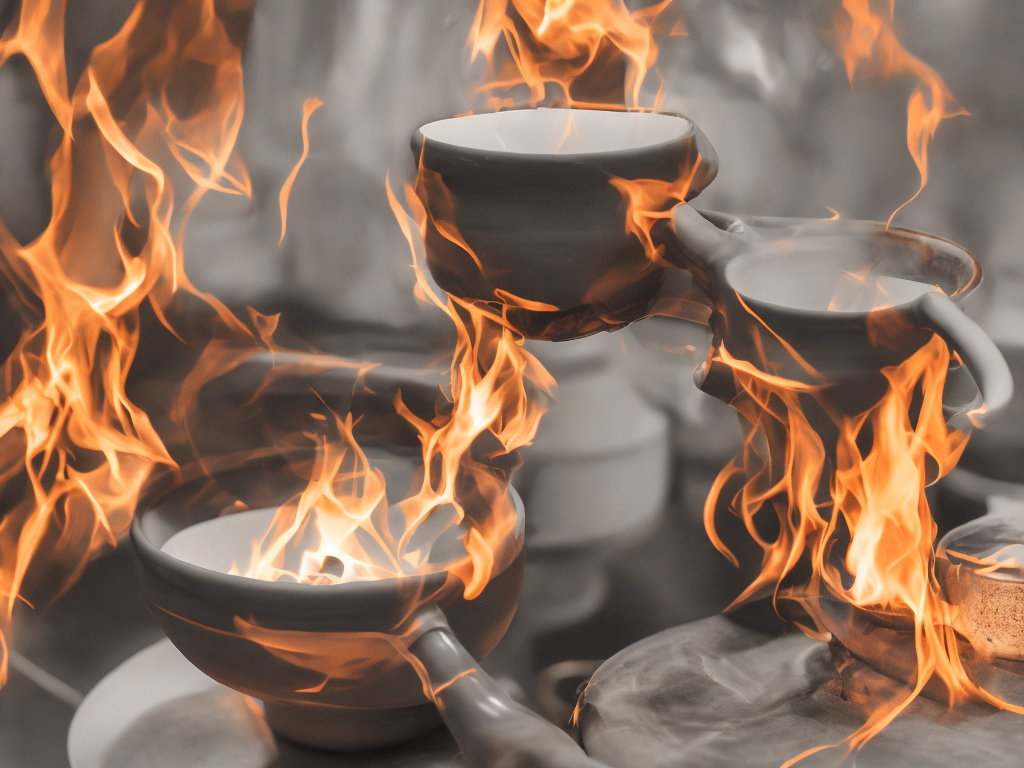
Calcination and roasting are two chemical processes that are commonly used in various industries to convert raw materials into useful products. Both these processes involve heating a substance but differ in terms of their purpose, temperature, and reaction mechanism. In this essay, we explore the similarities and differences between calcination and roasting.
Calcination is a process in which a substance, usually a mineral or metal, is heated to a high temperature in the absence of air to cause thermal decomposition or oxidation. In this process, the substance is exposed to heat until it reaches its thermal decomposition point and breaks down into simpler compounds. The process usually takes place in a furnace or kiln at temperatures ranging from 600°C to 1000°C.
Roasting, on the other hand, is a process in which a substance, usually an ore, is heated in the presence of air to convert it into its oxide form. In this process, the substance is exposed to moderate temperatures, usually between 450°C and 650°C, and oxygen is introduced to facilitate the chemical reaction. The resulting oxide is then used to extract the desired metal through further chemical or electrolytic processes.
One of the main differences between calcination and roasting is their purpose. Calcination is used to decompose a material into simpler compounds, while roasting is used to extract a metal from its ore. Furthermore, roasting is a precursor to additional steps that are required to extract the metal. Calcination, on the other hand, is often the final step in many chemical processes and is used to achieve a specific result, such as purifying a material or converting it into a useful form.
Another key difference between calcination and roasting is the temperature and atmosphere used in the process. Calcination involves higher temperatures, usually between 600°C and 1000°C, and is carried out in an oxygen-free atmosphere or a limited supply of oxygen. This is because calcination involves thermal decomposition, which is often an exothermic process, meaning that it releases heat. The absence of oxygen prevents the decomposition products from reacting with the air, which could cause unwanted side reactions.
In contrast, roasting involves lower temperatures, usually between 450°C and 650°C, and is carried out in the presence of air or oxygen. This is because the chemical reaction in roasting requires oxygen to occur. The introduction of oxygen facilitates the oxidation of the substance, which converts it into its oxide form. This is important because most metals are extracted from their oxide forms. The metal oxide can then be extracted through further chemical or electrolytic processes, which require additional energy input.
Calcination is used in various industries, such as cement manufacturing, where limestone is calcined to produce lime, which is an important ingredient in cement production. In the pharmaceutical industry, calcination is used to produce a purified form of a drug substance, which can be easily absorbed by the body. In the metal industry, calcination is used to produce a high-grade ore concentrate, which is then further refined to extract the desired metal.
Roasting is commonly used in the mining industry to extract gold, silver, and other precious metals from their ores. The roasting process converts the metal sulfides in the ore into metal oxides, which are then soluble in water, allowing them to be easily extracted. In the metallurgical industry, roasting is used to transform metal sulfides into metal oxides, which are then used to extract the metal through further chemical or electrolytic processes.
In conclusion, calcination and roasting are two important chemical processes that are used in various industries to convert raw materials into useful products. While both processes involve heating a substance, they differ in terms of their purpose, temperature, and atmosphere. Calcination is used to decompose a material into simpler compounds, while roasting is used to extract a metal from its ore. Calcination involves higher temperatures and an oxygen-free atmosphere, while roasting involves lower temperatures and the presence of air or oxygen. Understanding the differences between these two processes is important for optimizing their use in various industries.
 Self-Instruct
Self-Instruct